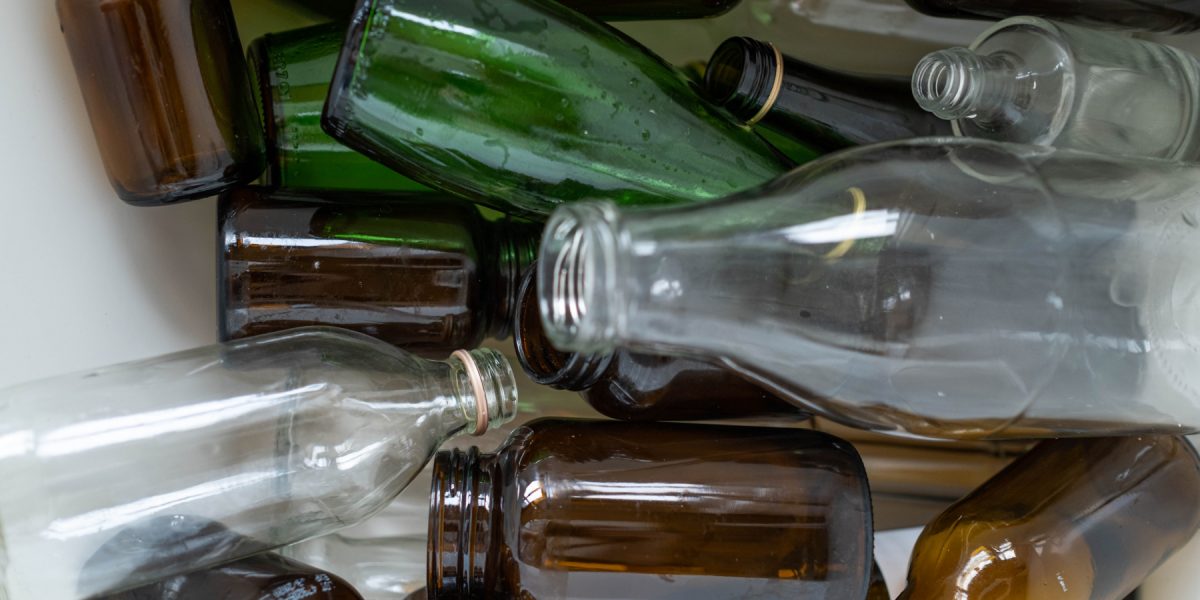Glass

Glass Recycling
Glass can be fully recovered in the recycling process with no degradation. Just like aluminum, it has the ability to be recycled infinitely. However, unlike aluminum, glass is very heavy to transport and collection can often be expensive or challenging. To recycle glass into new glass products, it needs to be melted down and then can be re-molded into jars, bottles, etc. Additionally, most purchasers of recycled glass want clear glass or glass of a specific color. As such, glass needs to be sorted by color, sold again and recycled into new glass products. The business case for recycling glass needs to reconcile the costs of transporting heavy material and sorting the glass by color with the price that material can be sold for.
The recycling of glass into new glass is less common than crushing or grinding glass down into sand that can be repurposed for construction materials, for which there is greater market demand.
The Cost of Glass
Glass is essentially made out of sand. The primary ingredient, silica sand, is mixed with other materials including sodium oxide from soda ash and calcium oxide from limestone, which are combined, melted and refined in a furnace and then undergo various coating and cooling processes (AIS Glass).
Glass production is a water-intensive (ScienceDirect) and energy-intensive process that relies heavily on natural gas powered energy (EIA).
Facts:
Glass produced from recycled glass reduces air pollution by 20% and related water pollution by 50% (WWF)
Glass containers for food and beverages are 100% recyclable, but not when mixed with other glass types. Other kinds of glass, like windows, ovenware etc. are manufactured via a different process. If these materials are mixed during the manufacturing process, they can cause production problems and defective containers. (GPI.org)
Summary
While glass has the capability and potential to be infinitely recycled, the high costs of recycling logistics make it unlikely that the majority of glass will be recycled into a new glass product. This could be addressed by hyper-localized recycling that minimizes transportation as well as government financial incentives like subsidies and tax credits to offset the costs.
Businesses need to work with their waste haulers to confirm that they accept glass, clarify which colors they accept, and ask how the glass is recycled through their partners for full transparency. As an individual, consider reusing and repurposing your glass products at home.
Tips:
Rinse out your glass containers before recycling!
Separate caps and lids before recycling.
